The beautiful game is rarely out of the national conversation. If the ongoing excitement and drama has convinced you to start your own local football club, this guide is for you.
We'll show you how to establish, protect and grow your football club, and how it can be a positive force in your local community too. We'll walk you through everything you need to consider to get the club off the ground and... well, into the grounds!
1. Decide on a format
OK, let's get the basics sorted. You will need to decide a basic format:
- What size team will you run - is this a 5, 7, or an 11-a-side team?
- What standard do you expect to play to? This will determine the types of competitions or leagues you enter.
- What level of commitment will you expect from your team?
- How often are training sessions and matches?
Football for all
Football is one of the most inclusive sports. As well as traditional men's, women's, boys' and girls' clubs, there are mixed teams too. Football teams now regularly form around a common cause or disability, opening access to all who want to play.
- Inclusive.Football lists a diverse range of inclusive and disability leagues, teams and events on its website, so you can take inspiration from those.
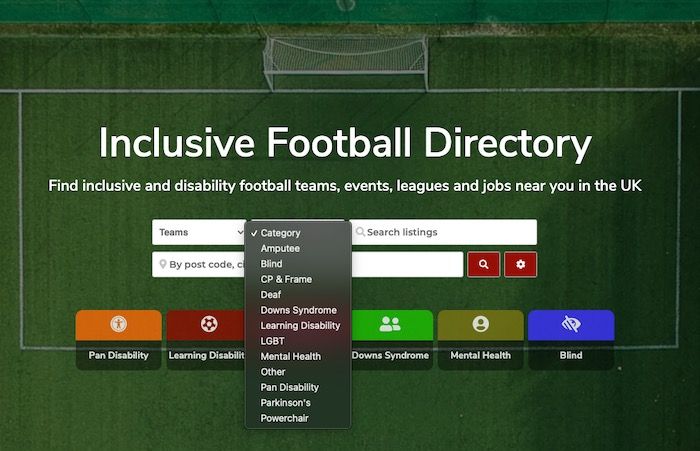
- Stonewall's Rainbow Laces campaign aims to "make sport everyone's game" by making everyone feel welcome through wearing Rainbow Laces in ace, bi, lesbian, non-binary, pan and trans flag colours. The Amateur FA has a guide to setting up a LGBT-friendly club.
- Amnesty International has created a guide on engaging refugee women and girls in football, available via the Amateur FA Inclusion page.
- The FA has a great guide supporting grassroots disability football.
- Often, amateur football teams align themselves with a chosen charity, such as breast cancer research, or suicide prevention and support. Are there any causes that you're passionate about that your club could support?
- Sands United FC is a network of local football teams helping fathers and bereaved family members affected by stillbirth and neonatal deaths, giving them a way to share their love of sport and also find support to talk about their grief.
Choose a legal structure - a CASC or a charity?
A CASC (Community Amateur Sports Club) is registered with HMRC and subject to fewer regulations and trading restrictions, but also comes with fewer financial benefits.
A registered charity is overseen by the Charity Commission and is required to adhere to more regulations and administration in exchange for receiving charitable status and the tax and financial benefits it brings.
Stone King has a handy table showing the available tax and other reliefs available as both a charity and a CASC. Click on "Tax and other available reliefs" on their page.
By setting up an amateur or local football club, you will probably want to register as a CASC, unless you have a specific reason for wanting full charitable status from the start.
2. Define your team's vision
Where do you want to take your club, ultimately? Is the football club simply for some fun and exercise (and there's nothing wrong with that), or are you out to win a local league and develop a recognised, serious competitive team?
3. Choose your club name
A football club needs a unique and memorable name. The name of your club can help capture your vision or the team's ethos, the club's principles or heritage.
Your team name needs to be unique so you can register with your County Football Association or local league. It can often include your club's local town or city, but you may also want to think about what makes your area great or noteworthy. Some team names are rather tongue-in-cheek, although do consider the effect a self-deprecating team name might have on your teammates, if you have serious ambitions.
Maybe this Wikipedia page of Association football club names will provide some inspiration?
4. Pick a colour, or two?
Now let's start thinking about the visual branding for your club. The colours you choose for the club can help tell people what you're about. For example, red in some contexts can convey strength, urgency and energy, whilst in other situations it can mean warning or danger. Blue can project trustworthiness; there's a good reason most financial apps on your phone will have a blue icon! It can also be useful if you're a coastal town, for example, to signify the sea.
This Help Scout article on colour psychology can help explain the perceived meaning behind some colours, and also talks about the different methods you can use to find two colours that will work well together on your badge and kit.
5. Design a crest or badge
Your club's crest helps uniquely identify your club, particularly given that there are only so many colours to choose from. If you or someone you know has graphic design skills, obviously you can do this yourself. If not, there are services you can use, like Your Football Club's badge designer or have a custom set of club graphics created for all of your marketing by Ten Sports Media, who specifically work with sports clubs.
The best badges are relatively simple designs that use 2 or 3 colours, so they can be easily embroidered onto clothing.
You can also apply your badge or crest to posters, t-shirts, merchandise, and even your home pitch dugout, like Caldicot Town AFC have done.
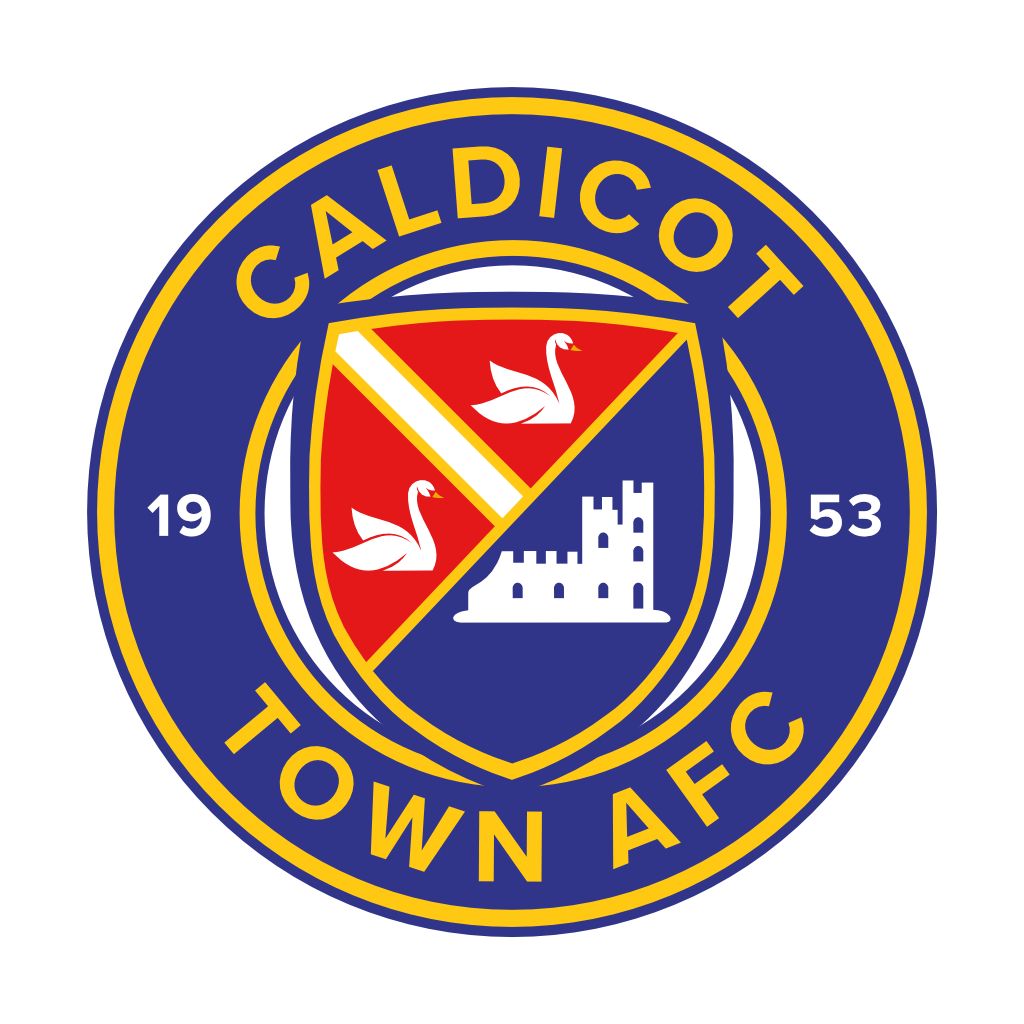
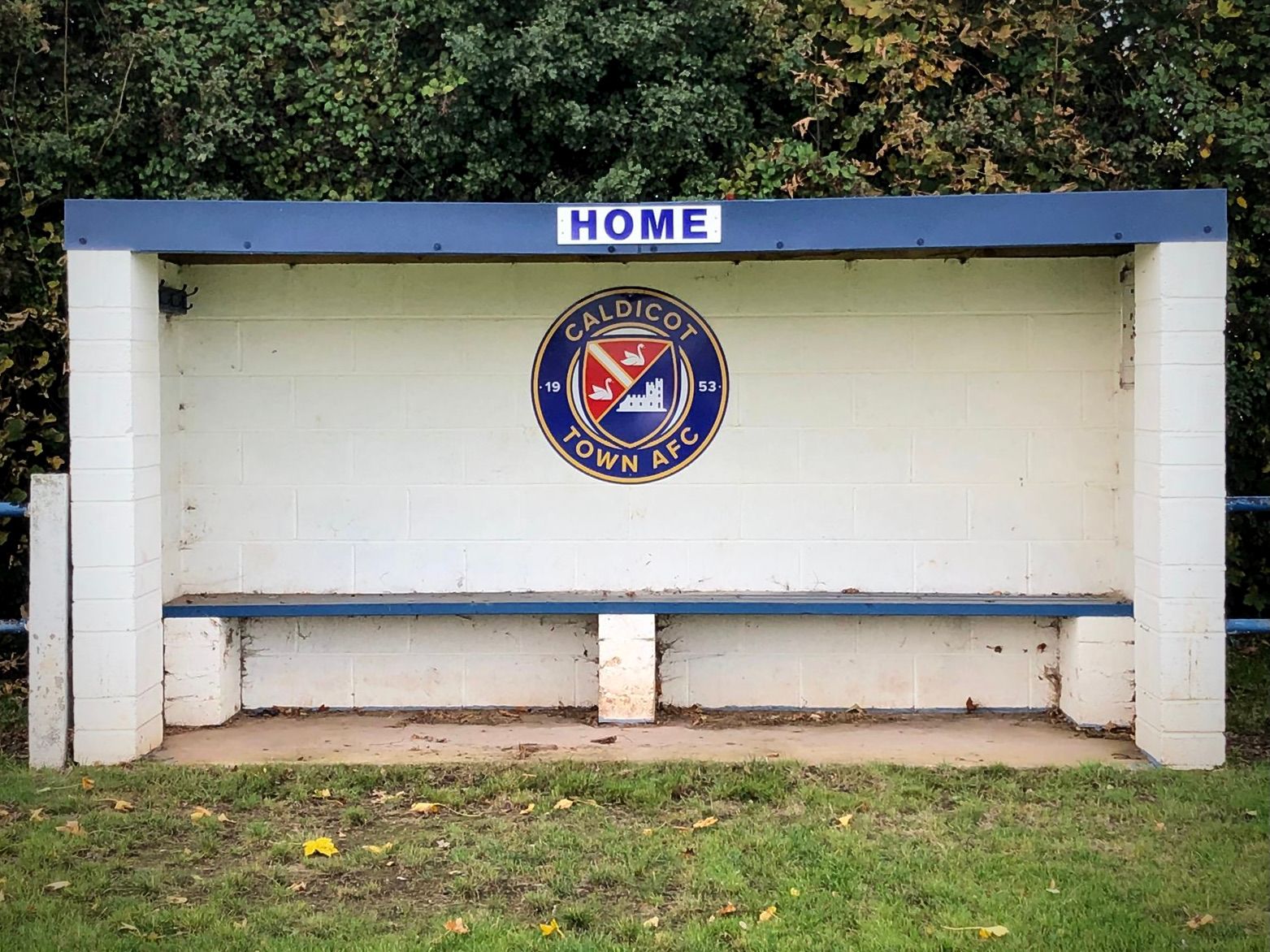
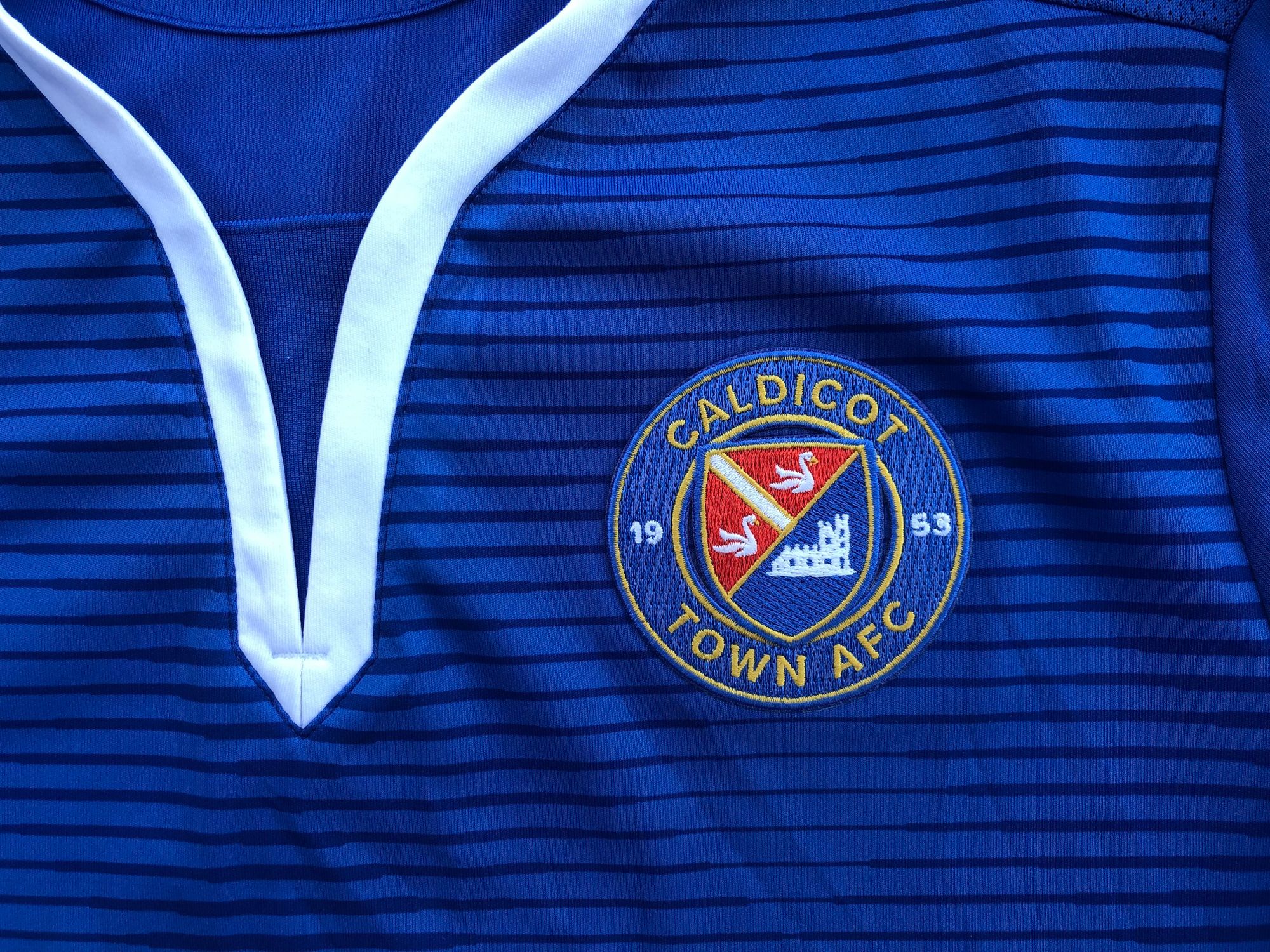
6. Select your club officials
5-a-side teams tend to be informally organised and managed by one person. Larger teams start to become work for more than one person, particularly if the manager also has a full-time job.
While you can take on all three roles initially, it's wise to get trustworthy deputies as quickly as you can, to share the load. Getting help also means that you can get to playing much sooner once all the setup tasks for the club are complete.
The FA requires larger football clubs to have at least these three official roles:
- Manager
The club manager is in charge of the club's on-field performance. They schedule and communicate the timing of training sessions to players. The manager maintains team morale, ensuring regular game time for every player, and improves team performance by working on tactics and formations.
The manager is the face of the club to the players and needs to be approachable but firm, to command respect across the team.
- Treasurer
In charge of the club's finances, the treasurer collects payments from players, manages the books, makes league and county payments, and accounts for the club's money.
Being a good treasurer involves a lot of trust, and the chosen person should be organised and good with numbers. The club should also have a dedicated bank account (lots of banks have "treasurer accounts" specifically for this purpose).
Merchant Savvy has a roundup of the 12 best UK charity and community bank accounts.
- Secretary
This person is in charge of the club's administrative responsibilities. They'll record the minutes of any committee meetings you hold. They liaise with the league and county FA, and represent the club.
They need to be reliable, organised and respectable, so that they show your club in the best light. They confirm fixtures and report scores to the league, and attend occasional meetings held by the county FA.
New treasurer or club secretary?
We've put together 5 free tips to help you manage your club payments like a hero
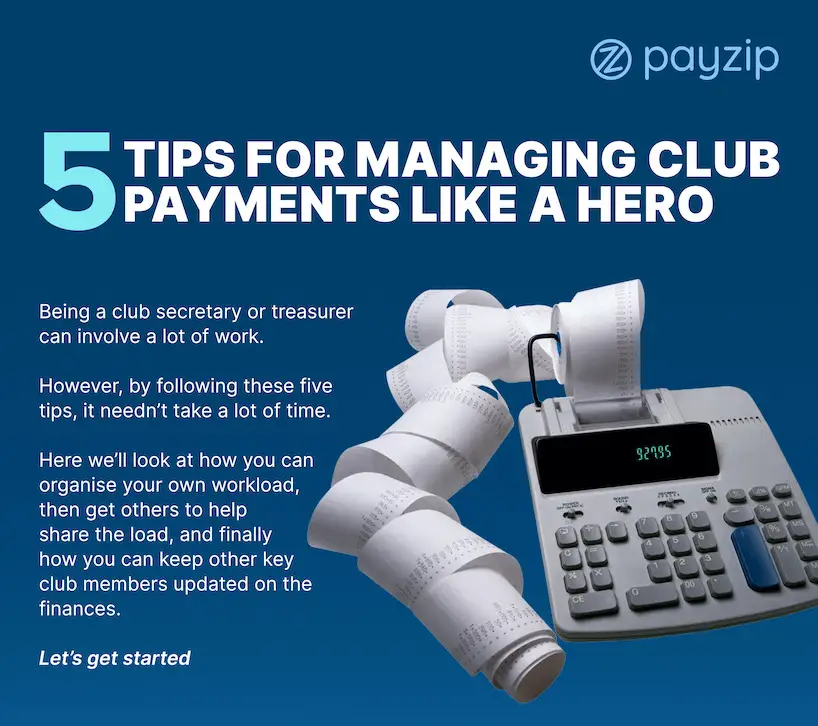
- Other roles
The FA has a PDF list of other roles (direct download) that you can consider having at your club.
7. Find a suitable venue
Where will your club meet to train? Where will you play your home matches?
Local schools, parks and leisure centres often have pitches you can rent, although you generally get what you pay for. More expensive pitches come with decent changing rooms and a groundskeeper to keep the pitch in good order.
Choosing the right pitch for you will depend on how serious the team is and what its finances can afford.
If you're in England, Pitchfinder is a database of pitches you can hire in your area. Playfinder claims to cover the UK and, whilst it has some places in Wales, it's not a comprehensive. Still, it may be great for your local area, so why not give it a try?
8. Define your match and training days
You'll need to discuss with your team which day(s) you'll get together to train, and how often your players can make it. Be mindful of any conditions that may limit their endurance.
If you're playing in a league, your training days will need to work around match days. Bear in mind if your league has cup competitions, as these will be an extra match day in the week until the club is eliminated (or wins!).
9. Complete your registration
- 5/6/7-a-side
Register your team and players with a local league. You can usually register 20 players for a squad over the season, but only 8 per match for 5-a-side, and 9 or 10 for 6/7-a-side respectively. Players must be named on the team sheet prior to kick-off in order to play.
Seasons last 14 weeks, with teams playing twice a week. Missed games will cost the club points, so players must be reliable.
Teams are charged each week by the league, usually costing no more than £5 per player, per game. You need to pay to play, so one person (usually the treasurer) will bring enough money to cover the club, then players pay the club back individually. This means you should never be in a position where you can't participate.
11-a-side/Sunday League
Registering a larger team is a little more complicated. Register with your county FA, as you can't even play a friendly or enter a league without registration. Registration typically costs around £50 per year.
Find your county FA
- The England FA website has a list of county associations.
- For Scotland, here's a list of affiliated bodies.
- For Northern Ireland, visit the Domestic section of the Irish FA website.
- FA Wales uses the Comet system for player and club registrations.
Next, apply to a local league. This generally involves submitting your:
- Team name and colours
- Contact details of manager, treasurer and secretary
- Evidence of registration with county FA
- Club bank account details
Find your local league
Your regional association will list the available local leagues.
League registration is around £100 a year. Usually this stage involves an interview to ensure you have financial capacity to last the entire season, will run a well-structured club, and that you generally taking things seriously and can be trusted to turn up to scheduled games.
Player registration
Register each of your players. Squads are typically around 20 players. For match days you will need 11 starters and 5 substitutions.
Some grassroots 11-a-side leagues have introduced rolling substitutions, allowing teams to bring players on and off the pitch as many times as they wish over the 90 minutes. Where this is the case, managers have access to their whole squad on match days, so there's no need to choose a team for the day. This means your reserve players can have more game time than under the traditional substitute model, where they may not be chosen for a game-day squad.
Total club registration costs are around £150 per season. Leagues have different starting dates, so bear this in mind when picking one for your club based on how soon you want to (or can) start playing together.
10. Write a constitution document
Your club's constitution is a document that outlines the clubs processes and procedures. Your constitution document should contain the club's:
- Name
- Purpose
- Aims and objectives
- Leadership team and committee structure
- Membership processes and culture
- Decision-making processes
- Disciplinary processes and procedures
The club then abides by the rules and processes in the constitution and a copy of it should be given to all members when they join the club.
There are some free club constitution templates at Net Lawman.
11. Gain FA accreditation
Consider becoming accredited under The FA's Charter Standard Programme. This will signal to potential players and sponsors your commitment to footballing excellence and equality.
12. Hold recruitment and trials sessions
Promotion
Without players, there is no team, so you'll need to recruit talent to your squad.
Word of mouth can help within your local network. Social media can play a significant part here too, including "Football Twitter" which is very active. Just google your town plus "football twitter" to see how other local clubs get the word out.
Hashtag United are a club that grew out of a YouTube video: https://inews.co.uk/sport/football/football-indepth/hashtag-united-the-amateur-football-team-with-a-premier-league-sized-fanbase-59291
Printing promotional flyers will be essential. Advertise in local swimming pools, gyms, 5-a-side pitches, leisure centres, supermarkets and corner shops, libraries, anywhere with a community noticeboard.
Does your employer have a company newsletter? Local schools may be willing to send a letter or email to parents (or include your item on one they're already sending).
There are also sites like UK Football Finder which can help.
Holding the trials

Once people are interested, you'll need try-outs to find the best players. Be organised, be early, have everything prepared for when people arrive on the day.
The Scottish FA has this list of drills and practises which you can use to give you an idea of each player's basic skills.
Split potential players into teams and hold short games in different combinations so you can see who is best in what position. Make notes and maybe get one or two other trusted friends to observe too, and compare notes. It is important to ensure your process for selection is fair and equitable, decision makers should challenge any unconscious biases to avoid any unintentional discrimination.
- Sunday league/11-a-side teams will want around 20 players on the team.
- 5-a-side around 8, and 7-a-side around 11.
Within a couple of days of the trials, let everyone know if they made the team by text or phone call. Don't burn bridges with players who don't make the squad, they may make useful reserves over the season, so keep their details on-hand.
13. Protect your club and its members
Insurance
For the insurances mentioned below, the Bluefin website has a grassroots football guide for each UK nation and how to find the right insurance for your club. Speak with an insurance specialist to make sure your club is appropriately covered against risk.
Personal accident insurance
This is for your players. Mandated by the FA and covers players' salaries in the event that they're unable to work following an on-pitch accident.
FA Wales provides a group policy for players when they are registered on the COMET system. Clubs in England, Northern Ireland, and Scotland will need to make their own arrangements, though there are usually affiliated schemes to provide discounts to their member clubs.
Public liability insurance
This covers spectators and those passers-by from the cost of accidental injury at a game played in a public place. Without this, your club could be sued for the cost of any injuries. You may be required to provide proof of insurance to your regional association upon registering.
Both of these insurances are often available as a bundle for around £200 per year per club.
First aid
Every club should have a first aid kit and a trained first aider to tackle minor injuries and help minimise damage in the first few moments of more serious injuries. First aid kits cost up to £35.
The Soccer Store has a good blog post on the FA's recommendations for first aid kits contents and first aid training.
Mental health
Humans are social creatures and interaction with others is important for our wellbeing. A good manager fosters a culture where teammates look out for one another, and where people feel comfortable in coming forward with any issues they're experiencing in a confidential and safe environment.
The Amateur FA has guidance on how to ensure your team is Mentally Healthy and how to properly support your players and deputies.
Suspensions
Your county FA will have a section on discipline and how suspensions and charges/fines are handled.
Here's what Amateur FA have on their site.
Injuries
In addition to the Personal Accident Insurance mentioned above, be sure to keep any injured players involved with the club. Some teams use a central WhatsApp group to co-ordinate information, whereas in time you may have your own website and private forum.
Private Facebook Groups can also do this well, although we'd recommend staying away from email lists, as they can quickly get hard to read when people replying hit "Reply all" to every message.
14. Review costs and funding / pricing

5/6/7-a-side
Costs are in the range of £5 per player per game, including pitch fees and the cost of providing a referee. Venues will usually provide a ball (though it doesn't hurt to have your own) and bibs. Kits are only required in more serious leagues.
11-a-side
- ~£150 a year to register with the local FA and league.
- £600 to £1,200 for kits. Quality footballs are up to £30 each, so budget around £200 to include some balls you'll only use on match days.
- £300 one-off for goalposts and corner flags.
- Up to £1,000 in pitch fees (depending on facilities and quality).
- £200 for personal accident and public liability insurances as above.
- £15 to wash the kit each week
- £15 game refreshments each week
- £25 first-aid kit for training and matches (see Resources for FA first aid training)
15. Set out your player fees
Your club will ask its players to pay money across the season. This can be:
- Club subscription
- Match fees contribution
- Kit contribution
- Repaying any discipline charges or fines (either whole or in-part)
Keeping track of all of those payments across 20+ players can be a challenge. Payzip is built specifically to manage these kinds of payments for clubs. In addition to sending members invoices, you can also use it to collect money where your members opt-in to paying, like collecting for you tour/trip deposits, or club merchandise (e.g. badges or t-shirts).
16. Budget for your venue/pitch
This is likely to be your highest annual expense, with fees ranging from hundreds of pounds to over £1,000, depending on location and facilities.
Some pitches need you to provide your own goalposts (or jumpers!) and corner flags. These are a one-off cost though, and usually only a few hundred pounds to buy.
17. Kits/training wear
Football kits
Smaller football clubs don't usually invest in full kits for their players, due to the informal nature of the game. They'll usually wear bibs to identify who is on which team. That said, players will still wear some kind of t-shirt (preferably a football shirt for breathability), shorts, football socks and boots. Depending on the playing surface, this will be either AstroTurf trainers with a dimpled sole for grip, or gum-rubber sole trainers for indoor playing.
11-a-side clubs are required to have a home and away strip, with the home kit matching the colours you supplied to the county FA. The colours of your away kit is up to you, although you can save money by having neutral colour socks and shorts (either white or black) allowing them to be used in both your home and away kit.
It's important to buy a good quality kit, which can last several seasons if properly laundered and looked after, particularly a less-used away kit.
Also consider whether you want to provide embroidered jackets and jumpers for your club manager and benched players as well. This isn't essential, but sends a strong signal of unity and belonging.
Teams are expected to provide the kit, though the team can choose to pass all or some of the cost of the kit onto the players (we'll talk about sponsorship in a minute). A decent kit will cost up to £60 per player, so the cost of kitting-out an entire team could be around £1,200. Players are expected to supply their own boots and shin pads.
Training wear
When your sponsorship or club budget allows, you can have (or require) a dedicated kit for training sessions. Until then, players should bring their own shorts and t-shirt, and appropriate footwear for the training pitch.
The club should buy (or borrow from the venue) training bibs to identify different teams of players. These are available for between £1-£2 each and may be a worthwhile investment.
18. Factor-in referee costs
You will need to pay for a referee whenever you host a home game. This usually costs around £30 in expenses and should be paid directly to the referee.
This covers the cost of their travel, their refereeing of the match, and the time for the paperwork done both before and after the game.
19. Attract sponsorships
One way to reduce the cost of running your club is to find one or more sponsors. In return for featuring their logo on your kit, publications and social media, they'll contribute or cover the cost of your kit and/or other expenses and be worth hundreds of pounds per year to the club.
Local businesses are often interested in sponsoring dedicated local teams, both as a way of highlighting their business to local potential customers, but also demonstrating their commitment to the local community.
Use your local network in the first instance - do you know anyone who runs their own business, or do any of your friends or family work for a small business? These are more likely to consider sponsorship requests quickly. Local pubs are a good source for sponsorship too, and can be mutually beneficial as the club will tend to hold its social functions at the pub too.
Remember that any sponsor is trusting your club with their reputation, so consider how you can demonstrate trustworthiness and how valuable you are to the community. Timely and polite communications are key when dealing with sponsors, helping to remove the barriers to success.
Further reading: How to get funding or sponsorship for your club
20. Promote your club
Think about how your club will communicate its updates to its fans. Initially you could do this through a Facebook Group for supporters or perhaps over Twitter.
Website
Ultimately you are going to want a website for the club. If someone in or around the club can build one, start with that. It's quite easy to put one together using Webflow or Wix - just keep it simple and it will also run smoothly on mobile devices too.
Beware of club management systems that offer a free website - this trick is used to keep you subscribing to their product so that you don't lose the website and its contents if you leave. Having a separate site is best.
52’ GOOOOALLLLLLL!@WatkinsSam extends our lead with a long distance attempt which lobs the keeper.
— Caldicot Town AFC (@CaldicotTownAFC) July 13, 2021
🔵 3-1 🟠#CTAFC pic.twitter.com/NWqrFPKbkB
Remember that club promotion is an ongoing activity, not one-and-done. Twitter is a great way to keep the conversation going about the club, particularly during and after matches. Have a look at how Caldicot Town AFC do this.
Set a professional tone for your club by having custom matchday graphics made, and using these on your social media. Ten Sport Media have a variety of plans to help clubs grow a following online.
Further reading:
How to promote your club online and offline
Apps & tools to help run your club more smoothly
21. Develop the club
To use the old adage, what gets measured gets done. Have a plan for your club's development and consider how you will review progress against your objectives. Even if your club if a 5-a-side get-together, your aspiration could still be to win the local Power League or similar.
Amateur FA have a great Club Development Tool (Word document) that can help you review each season, outline your ambitions, perform SWOT analysis, and measure your progress against your goals.
22. Contribute to the community
Think from the start about how you club can make a positive difference to the local community. In addition to attracting players for competition and exercise, you could:
- Nominate a chosen charity or cause that the club will support.
- Have an annual fundraising day - hold entertainment (24-hour karaoke marathon, anyone?) or fitness challenges. Stream to your supporters (and find new ones) with Facebook Live, Instagram TV or YouTube Live, which are all free.
- This is great exposure for the club and the proceeds can either be for the club, your chosen charity, or split between them.
- Talk about the benefits of teamwork to local school teams and the things you've found useful.
Local newspapers and hyperlocal bloggers love this kind of content too, so getting the word out should be straightforward.
Conclusions
Starting a club can feel complex, but by following the information here, it can be very rewarding. Not only will you meet new people, you may also be establishing a legacy that benefits your community for many years to come.
Running a club is enough work already without member payments becoming a headache. Manage and collect your member payments online with Payzip.

